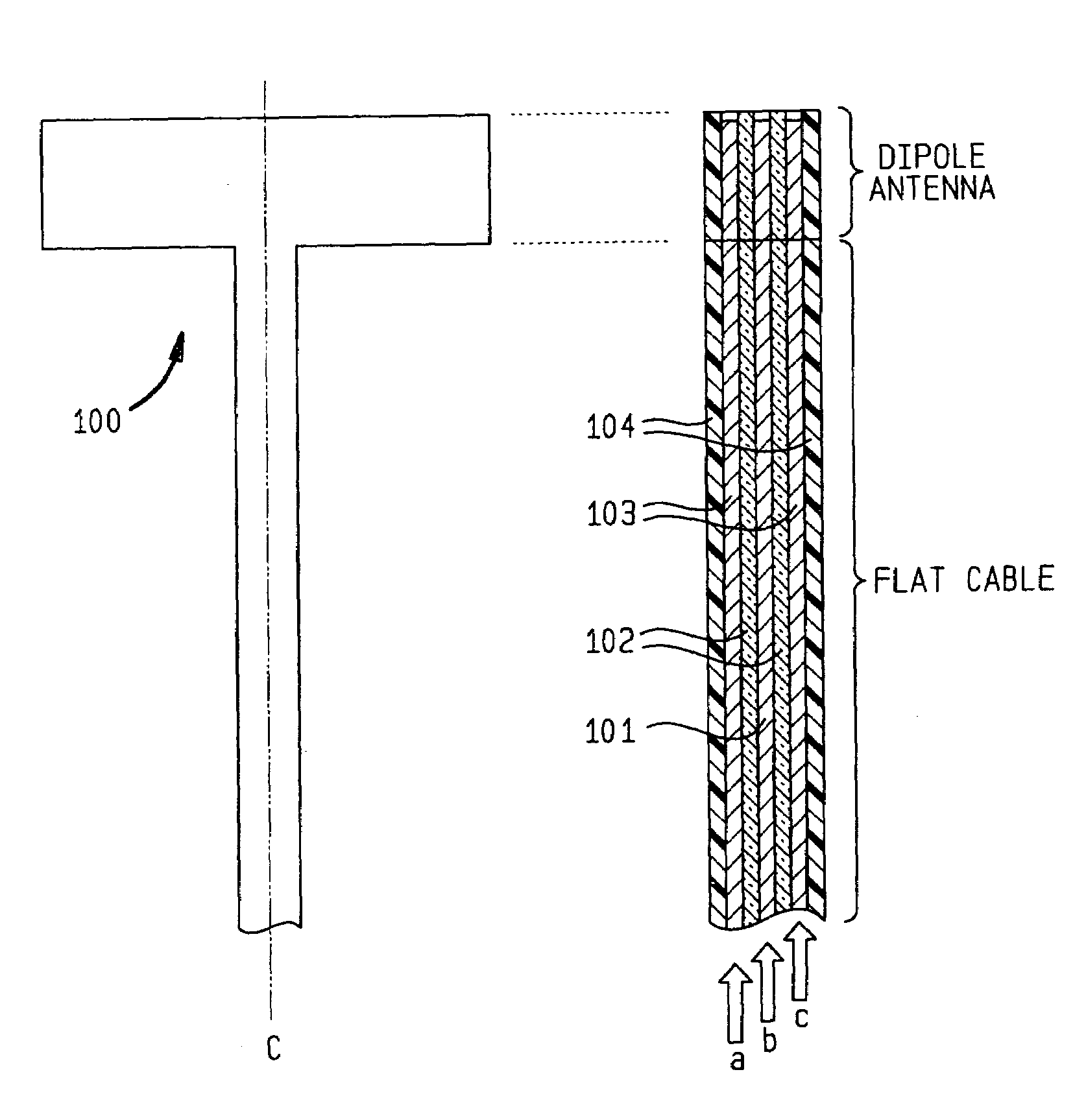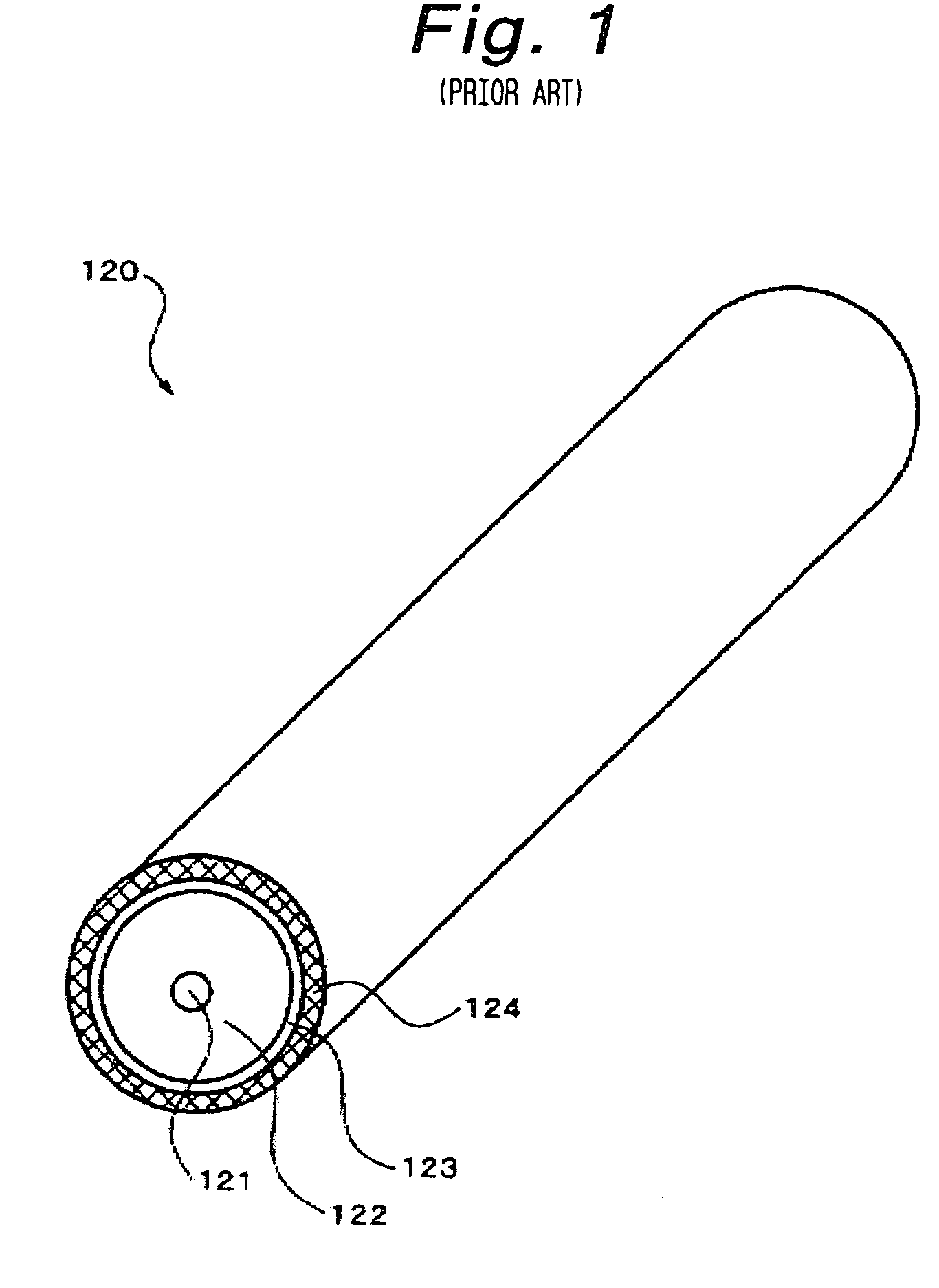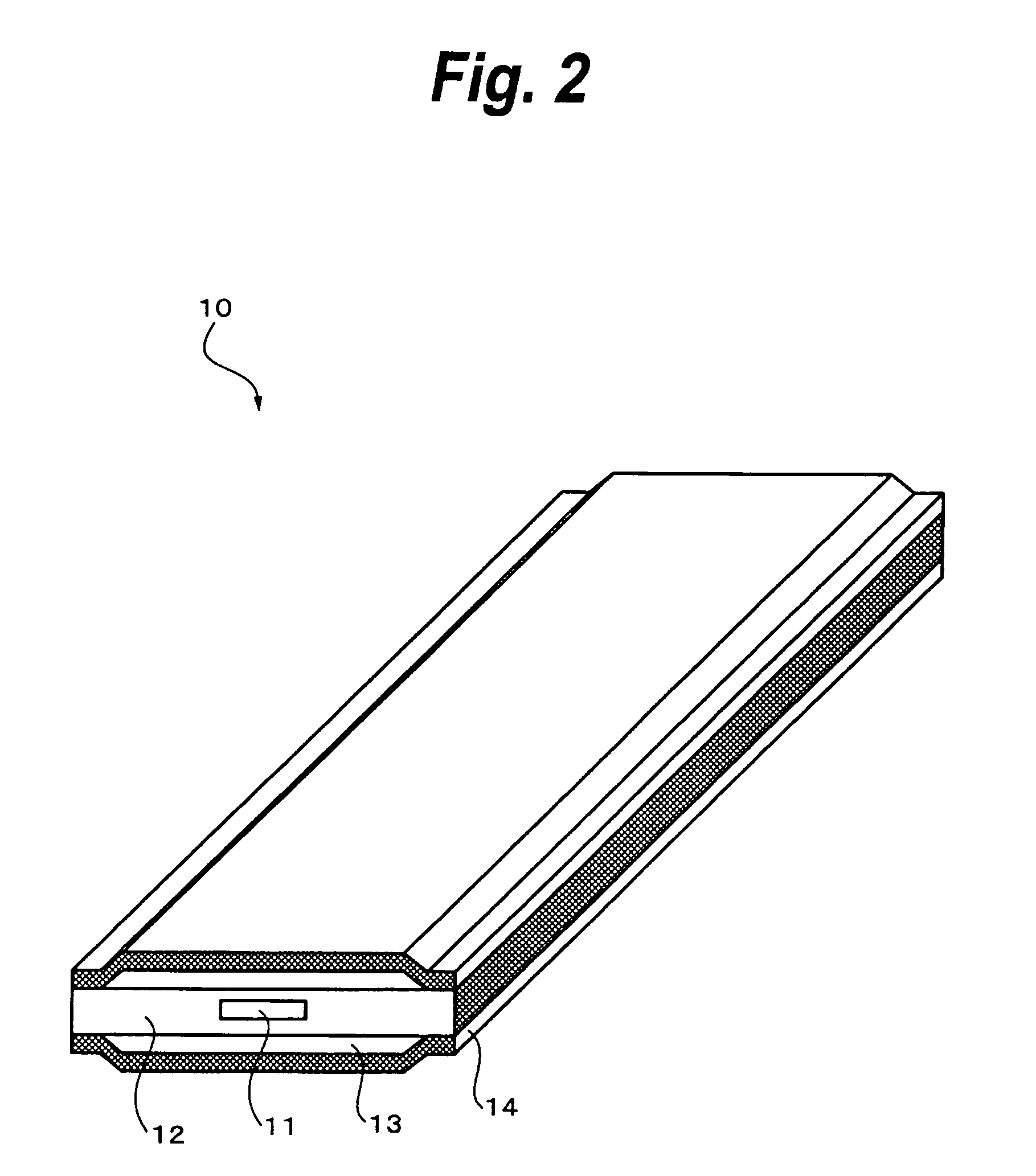Flat cable, flat cable sheet, and flat cable sheet producing method
a flat cable and production method technology, applied in the direction of flat/ribbon cables, insulated conductors, cables, etc., can solve the problems of difficult to reduce the production cost of coaxial cables, and the flat cables disclosed in japanese patent publications cannot be suitably used for transmitting radio frequency signals. , to achieve the effect of flexible wired
- Summary
- Abstract
- Description
- Claims
- Application Information
AI Technical Summary
Benefits of technology
Problems solved by technology
Method used
Image
Examples
first embodiment
(First Embodiment)
[0038]FIG. 2 shows the structure of a flat cable according to a first embodiment of the present invention. In FIG. 2, a cable 10 is a radio frequency cable that has a strip line structure. Since this cable is flat, it can be more flattened than conventional coaxial cables. In addition, when the dielectric substance is thinned and the ground layer is sufficiently wider than the signal line, the radiation of a signal from the side portion free of the ground layer can be suppressed. The characteristic impedance depends on the size of the cross-section of the signal line, the specific dielectric constant of the dielectric substance, and so forth. In this example, the flat cable is designated to have a characteristic impedance of 50Ω.
[0039]More particularly, the cable 10 is structured so that a signal line 11 is coated with a thin dielectric sheet 12 and ground layers 13 are formed on an upper surface and a lower surface of the dielectric sheet 12, the ground layers 13 ...
second embodiment
(Second Embodiment)
[0047]Next, with reference to FIG. 6, a flat cable according to a second embodiment of the present invention will be described. A cable 40 shown in FIG. 6 contains a signal line 41, a dielectric sheet 42, upper and lower ground layers 43, upper and lower shield layers 44, and upper and lower insulators 45. The signal line 41 is coated with the dielectric sheet 42. The upper and lower ground layers 43 are formed on the upper and lower surfaces of the dielectric sheet 42, respectively. Each of the ground layers 43 is sufficiently wider than the signal line 41. The upper and lower ground layers 43 are coated with the upper and lower insulators 45, respectively. The upper and lower shield layers 44 are formed on the upper and lower insulators 45, respectively. The upper and lower shield layers 44 are coated with the upper and lower insulators 45, respectively.
[0048]According to the second embodiment, the shield layers 44 and the insulators 45 are formed on the upper a...
third embodiment
(Third Embodiment)
[0050]Next, with reference to FIG. 7, a flat cable according to a third embodiment of the present invention will be described. A cable 50 shown in FIG. 7 is a cable having a coplanar structure in which a signal line 51 and two ground layers 53 are formed on the same plane (i.e., the surface of a dielectric sheet 52). Since the signal line 51 and the two ground layers 53 are formed on the same plane, namely on the dielectric sheet 52, the structure of this cable becomes simpler and it can be produced at lower cost than the foregoing cables.
[0051]The cable 50 is composed of a signal line 51, a dielectric sheet 52, two ground layers 53, and upper and lower insulators 54. As described above, the signal line 51 and the two ground layers 53 are formed almost in parallel in the longitudinal direction of the cable 50 so that the signal line 51 does not contact the two ground layers 53. In addition, the two ground layers 53 are formed on both sides of the signal line 51. In...
PUM
| Property | Measurement | Unit |
|---|---|---|
| radio frequency | aaaaa | aaaaa |
| impedance | aaaaa | aaaaa |
| thickness | aaaaa | aaaaa |
Abstract
Description
Claims
Application Information
 Login to View More
Login to View More - R&D
- Intellectual Property
- Life Sciences
- Materials
- Tech Scout
- Unparalleled Data Quality
- Higher Quality Content
- 60% Fewer Hallucinations
Browse by: Latest US Patents, China's latest patents, Technical Efficacy Thesaurus, Application Domain, Technology Topic, Popular Technical Reports.
© 2025 PatSnap. All rights reserved.Legal|Privacy policy|Modern Slavery Act Transparency Statement|Sitemap|About US| Contact US: help@patsnap.com



